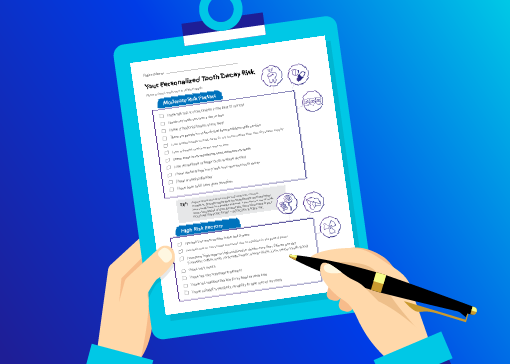Managing caries and motivating change, part 2: Motivational interviewing
How do you motivate your patients? Discover how caries risk assessments and motivational interviewing tactics can help you connect with…


Dental Labs cite about 31% of impressions received are “bad” or “sub-par.” Let’s consider our main communication instrument with our dental lab: the impression.
I am sure you have said to yourself, “I hope this crown just goes in.” But have you considered the proactive actions you could take to reduce crown adjustments at the seating appointment?
To understand the need for lengthy crown seating appointments and to identify possibilities to improve, let’s look at our main communication instrument with our dental lab: the impression. Dental labs cite that an average of 31% of impressions received from their dentist clients are “bad” or “sub-par.” An assessment by Gordon Christensen similarly found that up to 90% of all dental impressions don’t effectively capture the entire margin of the crown.1,2
Without question, there is room for improvement.
One important factor influencing the quality of an impression is the oral condition — specifically, the periodontal status and oral hygiene, as well as the degree to which gingival retraction was achieved and moisture was managed. Not controlling for these factors during the impression procedure can incite a vicious cycle that can lead to ill-fitting restorations and even to the loss of the restored tooth. This cycle is initiated and exacerbated by bad oral hygiene, as the figure below shows.

While situational considerations play a role in the ultimate success of your final restoration, so do the properties of your preferred impression material. Choosing the right material can help to manage severe intra-oral situations and support sound clinical outcomes.
Of course, no impression should be taken if the soft tissues are inflamed. But even with healthy soft tissue, it is sometimes impossible to avoid the presence of blood and moisture in the prepared area. Materials with excellent hydrophilicity can help you manage these difficult clinical situations.
As material classes go, polyether materials are intrinsically hydrophilic, based on their chemical composition. VPS materials, on the other hand, are made hydrophilic with the addition of surfactants. Hydrophilic impression materials have an affinity for aqueous environments and will displace moisture on contact. Therefore, hydrophilic impression materials can make the difference between capturing the margin – or not.3
With oral conditions managed and the right material in tow, standardizing the full impression procedure can help to ensure accurate impressions that require less adjustment. The Six Sigma Process was deployed at HealthPartners Dental Group, and it demonstrated that switching to one standard impression material and an automatic mixing process led to significantly fewer remakes and reduced crown seating time.4
In an observational study done at Pacific Dental Services (PDS) in California, standardization of the impression procedure also led to statistically reduced crown seating time.4 Prior to the test, 200 crown seating appointments were observed, and the incidence of adjustment was 83%, with crowns requiring an average of 26 minutes of adjustment by the doctor.
Here again, the improved procedure leveraged an automatic mixing unit and a polyether impression material. Armed with this standardized procedure, the percentage of crowns needing adjustment was reduced to 30%. Crowns that needed adjustment required an average of only 14 minutes.
We all know time is money, and you can determine what that time would mean to you. For example, if you place 300 crowns per year (about one per working day), this translates to 87 hours saved:
300 crowns x 83% x 26 minutes = 108 hours
vs.
300 crowns x 30% x 14 minutes = 21 hours
If one hour in your practice has a value of $3125, using a high quality, hydrophilic material and adopting a standardized procedure could mean saving $27,144 annually. Depending how you repurposed this time, your financial benefit could be even higher.

Cement cures in a matter of minutes. So, if you’re setting aside 30-60 minutes for crown seating appointments, it may be beneficial to reevaluate your impression procedure. Ask yourself:
If yes, are you ready to take the 15-minute challenge?
Sources

How do you motivate your patients? Discover how caries risk assessments and motivational interviewing tactics can help you connect with…

Caries is a complicated multifactorial disease. In this two-part series, explore how caries risk assessments can help improve evaluation and…

Zirconia may be part of your everyday vocabulary, but how much do you know about this ceramic material? Learn more…